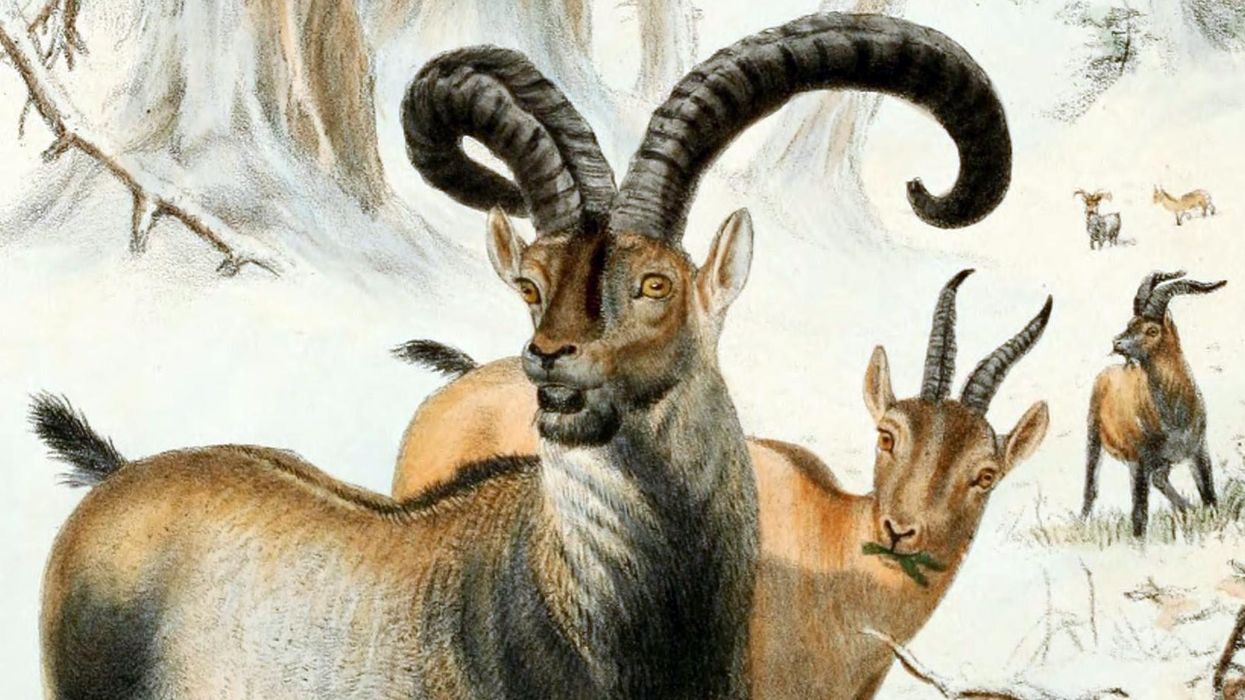Greg Evans
Nov 26, 2017

Picture:
Joseph Wolf (Public Domain)/ Wikimedia Commons
If you think you are down on your luck spare a thought for the bucardo, the first and only animal in history to become extinct twice.
Just in case you aren't David Attenborough and aren't aware of every animal on the planet, the bucardo was a mountain goat commonly found in the Iberian peninsula or the Pyrenees mountains.
It was also referred to as the Pyrenean ibex, or the Iberian wild goat, and was famed for its large curly horns.
Sadly, despite being an animal often associated with regional pride it became a prime target for hunters.
In the latter half of the 20th century, the bucardo was more commonly seen mounted on walls than mountainsides and by 1997 there was only one left in the wild, which was later found dead in 2000.
This tragic decline of a once-proud creature wasn't the end of the species' story.
Shortly before the death of the last remaining bucardo, which was a female, she was humanely captured by local wildlife vet Alberto Fernandez-Arias.
Alberto was inspired by the story of Dolly the sheep the first ever cloned mammal and decided to take cell samples from the bucardo in an attempt to preserve it's DNA.
Speaking to IFL Science, Alberto said:
Cloning in mammals was thought to be impossible.
Then in 1996, there was Dolly the Sheep. And that changed a lot of things.
After successfully extracting the cells, they were then placed into a deep-freeze cryopreservation where French and Spanish scientists were allowed to work on them, in the hope that they could resurrect the animal.
From there the experts began injecting the bucardo's cells into goat eggs, that were void on their own genetic material and placed the eggs into hybrids of the Spanish ibex and domestic goats.
Despite implanting 57 embryos only seven hybrids became pregnant. Of that seven, six miscarried but against all odds one did become pregnant and gave birth to a female in July, 2003.
For a brief moment, humanity had overcome extinction and brought a species back to life. Sadly we should emphasize the use of the word "brief."
As Alberto explains, the new goat met a tragic end quickly into its life on Earth.
As soon as I had the animal in my hands, I knew it had respiratory distress.
We had oxygen and special drugs prepared, but it could not breathe properly.
In seven or 10 minutes, it became dead.
This amazing but sad story didn't capture the public's imagination until 2009 when a paper of the study was published through the journal Theriogenology.
Money for the research has since dried up and the scientists have now gone their separate ways - meaning that it is unlikely that bucardo will ever return to existence.
Other attempts to bring species back to life have been made around the world but for Alberto, rather than science, the protection of the bucardo was always the goal.
When the bucardo were alive, we were trying to save them.
When they all died, we were still just trying to save them.
HT IFL Science
Top 100
The Conversation (0)













